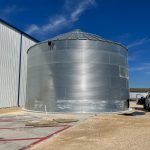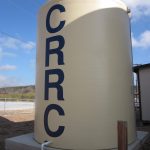Chris Maxwell-Gaines, P.E., the owner of Innovative Water Solutions LLC, was proud to serve on the Austin Graywater External Working Group as a citizen stakeholder. He was appointed to this Group by Councilman Chris Riley.
The Austin City Council passed Council Resolution #20120126-047 which directed the City Manager to work with the Graywater Working Group to identify impediments to single-family graywater reuse implementation and make recommendations on alleviating those impediments related to the following four charges:
- the exploration of the feasibility of code amendments and make recommendations, inclusive of both retrofitting and new construction;
- a permitting and approval process for graywater systems;
- a technical guidance document, with recommendations for the Environmental Criteria Manual; and
- a program for staff support of graywater systems, potentially housing the Austin Green Building Program, including recommendations on training, resources, and incentives and/or rebates for participation.
City Staff representing Austin Water Utility, Planning and Developpment Review, Watershed Protection, Health and Human Services, and the Office of Sustainability met with the Graywater External Working Group to identify impediments to residential graywater inplementation within the City of Austin. Following is the list of impediments identified by the group:
1. More than one facility for guidance and information
Under current processes, individuals seeking a plumbing permit that involves an auxiliary water system of any type must first go to the One Stop Shop (OSS). As there is currently no formal system for residential plan review, a citizen may be issued a permit, install a system that does not meet City regulations, and face costly redesign work to come into compliance with code. To help alleviate this, City staff have put an interim procedure in place so that citizens who visit the Permit Center to install auxiliary water systems of any type, including graywater, are referred to staff in the building inspection division of the Planning and Development Review Department. The building inspection staff will consult with the customer prior to permit issuance and also notify Austin Water Utility’s Special Services Division (SSD). Staff from SSD are located in a different building, and ask customers to meet with them for an informal plan review and discussion of the proposed system and requirements. Development Review staff based out of OSS conduct field inspections during construction and to pass the final system.
Recommendation #1a: Coordinate all permit processes through OSS in a way that the customer has one point of contact unless the customer requests additional information.
Recommendation #1b: Coordinate all information about design requirements, helpful tips and cost/benefit of residential graywater through Austin Water’s Conservation Division. Other departments should link to, rather than copy or reprint, information from Water Conservation to ensure one single, up-to-date message to the public.
2. Required depth of leach field distribution piping
Currently, the minimum required depth to the top of the leach field distribution piping is 12 inches per the chart referenced in the 2009 Uniform Plumbing Code (UPC), Chapter 16, Part 1, Section 1611.0. The Batchelder permitted system reduced the depth to the top of the leach field distribution piping to 4 inches, which allowed for graywater distribution closer to the effective root zone of the landscaping while still containing the maximum calculated discharge under the soil surface. This system leach field design was permitted by the Planning and Development Review Department as allowed by Section 1612.0(A) of the 2009 UPC as locally adopted. However, because there is no guidance as to which alternate methods of compliance may be acceptable to inspectors, many citizens feel the requirements stated in the code are an impediment to less costly designs.
There is no state requirement related to any minimum depth for graywater leach field distribution piping. The 2012 UPC, although not currently adopted, has a minimum requirement of 2 inches to the top of the leach field distribution piping for subsurface irrigation fields and mulch basins per Chapter 16, Table 1602.11.3. The 10-inch trench depth is retained in the 2012 UPC as it relates to subsoil systems per Chapter 16, Table 1602.11.3.
Recommendation #2: Adopt the 2012 UPC with no additional local amendments relating to leach field depth. Post information on how to calculate leach field requirements on Graywater Information section of Water Conservation website (with links from other departments as appropriate).
3. Type of material required in trenches
The 2009 UPC allows clean stone, gravel, slag, or “similar filter material acceptable to [the City]” as the fill material for the leach field trenches per Chapter 16, Part 1, Section 1611.0(B). Gravel and other similar material are a typical drainage fill materials because they are easy to compact, provide drainage without absorption and possess structural longevity. The Batchelder permitted system was allowed to use a mulch basin instead of a subsoil irrigation field comprised of filter material in an effort to facilitate line replacement when clogged and to allow for the distributed graywater to remain closer to the effective root zone of the landscaping due to the absorptive capacity of the mulch. This mulch basin system was permitted by the Planning and Development Review Department as allowed by Section 1612.0(A) of the 2009 UPC as locally adopted. However, because there is no guidance as to which alternate methods of compliance may be acceptable to inspectors, many citizens feel the requirements stated in the code are an impediment to less costly designs. There is no state requirement related to trench fill material. The 2012 UPC allows for mulch basin and mulch-covered subsurface irrigation field designs per Chapter 16, Section 1602.11.
Recommendation #3: Adopt the 2012 UPC with no additional local amendments limiting trench materials. Post information on benefits/concerns about various trench materials on Graywater Information section of Water Conservation website (with links from other departments as appropriate).
4. Requirement of multiple zones for the system
Current City of Austin plumbing code requirements state that you must have at least three zones on any permitted gray water system per the 2009 UPC, Chapter 16, Part 1, Section 1607.0. A single zone would simplify the design and reduce the cost associated with the current system. There is no state requirement related to multiple zones for graywater systems. The 2012 UPC requires a minimum of one drain line per valved zone according to Chapter 16, Table 1602.11.3.
Recommendation #4: Adopt the 2012 UPC with no additional local amendments relating to required number of zones.
5. Container requirement
There are multiple regulations related to holding tank configuration under current City of Austin plumbing code requirements per the 2009 UPC, Chapter 16, Part 1, Section 1609.0, Subsections A-I. Tables 16-1 through 16-4 provide design schematics for 4 types of systems; a gravity based system, a pumped system, a multiple tank system and an underground pumped system; all provided examples incorporate tanks into the system. Additionally, Texas Administrative Code, Chapter 210.83, Section A, Subsection 3, Lines A-E prescribe container requirements, as does Texas Administrative Code, Chapter 210.25, Sections A-I. The current container requirement adds to the additional cost of the system, contributes to the septic like build of the system and becomes a barrier to certain biological filtration designs. The 2012 UPC does not require a holding tank (surge tank) for systems that are able discharge the total estimated amount of graywater on a daily basis per Chapter 16, Section 1602.2.2; however, systems that are unable to fully discharge the daily estimated graywater amount must install a surge tank in accordance with Chapter 16, Section 1602.9.1
Recommendation #5: Proceed with adoption of the 2012 UPC; seek clarification from TCEQ as to whether local amendments would be required to meet State requirements relating to containers.
6. Cost issues related to septic-type build of 2009 UPC Chapter 16 design requirements
In many aspects the currently required graywater systems design mimics many of the design requirements for On-Site Sewage Facilities (OSSF). OSSFs are commonly referred to as Septic Tanks. Examples of similarities between the two systems include holding tanks, leach fields, perforated piping and multiple zone requirements. Some of the similarities are a result of both current state and local regulations related to graywater (holding tank) while other similarities are a result of local requirements only (leach fields, multiple zones, perforated piping). While some of these requirements are in place to address potential environmental, public health and public safety concerns, the similarities between the two system requirements do increase the overall cost of the graywater system. Chapter 16 of the 2012 UPC does provide some potential relief from a few of the similarities relaxing the requirements for the holding tank and multiple zones.
Recommendation #6: Adopt the 2012 UPC with no additional local amendments relating to specific build types unless TCEQ confirms that such amendments are necessary to ensure systems comply with State regulations.
7. Cross connection and backflow requirements
Currently, the City of Austin requires a reduced pressure zone backflow prevention assembly (RPZ) at the meter for any service connection with auxiliary water, including graywayer, on the property. This is intended to protect the public water supply from any contamination by non-potable sources. Depending on system design, additional protections may be required by the City on possible connection points on the system itself and elsewhere on the property or its physical structures to protect the on-site potable water supply. These requirements add to the initial project cost, and require annual testing and inspections at an additional cost. State code requires additional protection at the meter in the form of an air gap or backflow prevention assembly only when an actual or potential hazard exists and the utility does not have an adequate internal cross-connection program.
Recommendation #7: As part of the regular process to adopt the City’s plumbing code, adopt the 2012 UPC with consideration of local amendments to address concerns about potential hazards. Backflow protection requirements are not limited to residential graywater use. Since amendments could potentially apply to other types of auxiliary water use at both commercial and residential properties, it is important to consider backflow protection requirements in a broader context. Austin Water has issued an RFP for a consultant who will be tasked with assessing risk and proposing revisions to the City’s auxiliary water regulations. The analysis conducted as part of that effort should be considered when developing any local amendments.
8. Customer Service Inspection (CSI) requirements
Customer Service Inspections (CSI) are independent of the annual backflow inspection and intended to identify potential cross connections between the potable and non-potable water systems. TCEQ rules require CSIs for new construction, major plumbing work, and when a contamination hazard is believed to exist. City regulations require cross connection inspection and testing upon installation of a pressurized auxiliary water source, including graywater, used to supply a private pressurized water system inside or outside a building on a site served by City potable water. City regulations also provide that a periodic (other than annual) inspection of auxiliary water systems, including graywater, may be approved by the City, with the frequency based on system complexity, exposure for modifications, hidden or visible piping, hazardous materials used or stored, history of compliance, etc. In practice, the City generally requires auxiliary systems to undergo annual inspection. This additional inspection contributes to the overall cost of the system as well as reoccurring fees for the life of the system.
Recommendation #8: As part of the regular process to adopt the City’s plumbing code, adopt the 2012 UPC with consideration of local amendments to address concerns about potential cross-connectionsAustin Water has issued an RFP for a consultant who will be tasked with assessing risk and proposing revisions to the City’s auxiliary water regulations. The analysis conducted as part of that effort should be considered when developing any local amendments, and include recommendations relating to the frequency of required CSIs.
9. Lack of access to, communication about, and clarity of design requirements and definitions
In general, citizens feel that there is unclear information about what is required of a graywater system both in terms of code requirements and City communication about those requirements. For homeowners interested in using graywater, the lack of clarity about minimum system requirements, alternative methods of compliance, and what is or is not allowable creates a significant barrier. Additionally, there are a number of technical terms that may be unclear to the general public or used in different ways by different City departments, adding to confusion.
Recommendation #9: Coordinate all information about design requirements, links to relevant codes and definitions of terms relating to residential graywater through Austin Water’s Conservation Division. Other departments should link to, rather than copy or reprint, information from Water Conservation to ensure one single, up-to-date message to the public. Provide additional copies of current plumbing code to area libraries to ensure at least one copy is available for check out, and one copy available for reference at all Austin Public Library branches. Provide citizens a general summary about City requirements for graywater systems, which should include information on any requirements for professional design, leachfields, backflow and cross-connection prevention, and specific Code and regulatory references for plumbers or other design professionals.
10. Requirement for engineered design
Currently, the 2009 UPC, Chapter 16, Part 1, Section 1601.0, Subsection A, requires that all graywater systems be designed by a person registered or licensed to perform plumbing design work. The City adopted this requirement to ensure that persons with professional liability and familiar with current plumbing regulations design the graywater systems in order to minimize the potential for incorrectly or poorly designed systems from being installed. Currently, the City’s building official requires that graywater systems be designed by a Professional Engineer licensed in the State of Texas to ensure that design criteria are met. There is no state requirement related to a professional graywater design. The 2012 UPC does not require a person registered or licensed to perform plumbing design work for systems having a maximum discharge of 250 gallons per day according to Chapter 16, Section 1601.2, Exception 3.
Recommendation #10: Adopt 2012 UPC, and establish procedures that require additional information to be submitted with a permit application in the form of an auxiliary water addendum. No plan review would be required for residential systems designed by a person authorized to perform plumbing design work and where a license number is included on the permit application, unless a critical condition is identified as part of the permit process. Homeowner/homestead permits would be allowed, but would require plan review prior to permit issuance.
11. Lack of a clearly defined permit process specific to graywater
Under current City regulations, no permit process exists specific to graywater or any auxiliary water system. A citizen or the installer must obtain a plumbing permit to modify plumbing on the property and install the required RPZ. As a stop-gap measure, staff have developed the informal review process described in item #1. As this process is evolving and crosses departments, there is a lack of clear information for customers who enter the OSS and ask specifically about graywater. This results in customer frustration, the potential for confusion or misinformation, and the potential that a customer may circumvent City processes.
Recommendation #11: Establish permit process for auxiliary water systems that is additional to any plumbing or building permits required, and which ensures moderate fees for residential graywater applications. Ensure that additional information is submitted with a permit application in the form of an auxiliary water addendum and reviewed by OSS staff prior to permit issuance. Applicants indicating that they meet one or more critical conditions as identified by City staff (distance from critical environmental features, intent to connect to a potable water supply, etc.) would receive plan review by affected departments prior to permit issuance.
12. Lack of technical plan review prior to permit issuance
Residential building and plumbing permits do not currently have a process for technical review of plans prior to installation. While an interim process to offer a review has been developed by PDR and SSD, the lack of a formal review can mean that a customer installs a system that does not meet City requirements. Modifying the system to pass inspection can add significant costs to a project, and increases the staff time spent on multiple visits and corrective action.
Recommendation #12: Offer courtesy plan review for any customer upon request; require plan review when a submitted auxiliary water addendum indicates a critical condition as defined by City staff, and/or for Homeowner/Homestead permits.
13. Limited access to technical guides and codes
Specifications and design guidelines for graywater systems are outlined across several different codes, including Texas Administrative Code, the Utility Criteria Manual, local amendments to the plumbing code, and the 2009 Uniform Plumbing Code (UPC). While the first three items are available online, the UPC is available only by purchase through the publisher, and (in limited quantities) for checkout or review at public libraries. There is currently no document or guidance listing all sections of these codes which may be applicable or useful to those designing graywater systems.
Recommendation #13: Coordinate all information about design requirements, links to relevant codes and definitions of terms relating to residential graywater through Austin Water’s Conservation Division. Other departments should link to, rather than copy or reprint, information from Water Conservation to ensure one single, up-to-date message to the public. Provide additional copies of current plumbing code to area libraries to ensure at least one copy is available for check out, and one copy available for reference at all Austin Public Library branches and through the City Clerk’s Office. Provide citizens a general summary about City requirements for graywater systems, which should include information on any requirements for professional design, leachfields, backflow and cross-connection prevention, and specific Code and regulatory references for plumbers or other design professionals.
The Graywater External Working Group developed a memo to the Austin City Council, detailing our recommendations and thoughts about these 13 impediments. Austin Water and the Graywater Working Group also prepared a briefing presentation for City Staff.
Other members on the Working Group included:
- Paige Hill, Executive Director, Urban Patchwork Neighborhood Farm
- Lauren Ross, Ph.D, P.E., President, Glenrose Engineering, Inc.
- Amanda Van Epps, Ph.D Candidate in Civil Engineering, University of Texas at Austin
- Karin Ascot, Community Member and Conservation Advocate
- Gayle Borst, Architect, Stewardship, Inc.
- Kirby Fry, Owner, Southern Exposure






